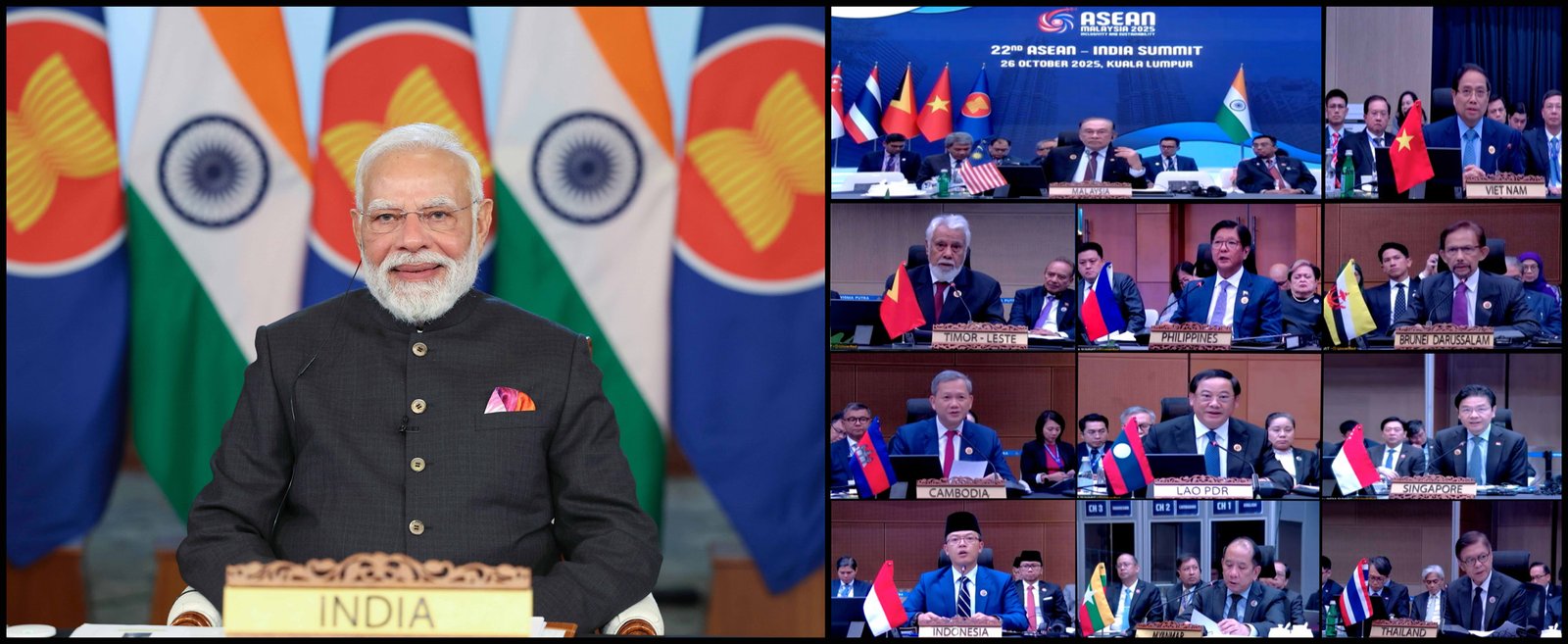Context
- India, being the most populous and one of the youngest countries, is expected to contribute around 18% of the total incremental global workforce over the next 25 years.
- But this demographic dividend comes with a short window as the working-age population (15-64 years) is expected to peak around 2043. This makes employment a national priority.
| Demographic dividend: When a country has more working-age people than dependents, it can boost economic growth if they have jobs. |
Why Should Employment Be a National Priority?
- Economic Growth: Productive employment boosts GDP, income, and consumption, accelerating and stabilising growth in a consumption-driven economy.
- Social Stability: Quality jobs reduce poverty, inequality, and social unrest, promoting inclusive development across regions and communities.
- Demographic Dividend: Harnesses India’s young population effectively, preventing the large youth population from becoming a socio-economic liability.
- Human Capital Development: Employment drives skill acquisition, innovation, and productivity, strengthening the workforce.
What are the government initiatives and measures taken till now?
- MGNREGA: To provide 100 days of wage employment to rural households in order to empower marginalised communities especially women and SC/St groups.
- Skill India Mission: aAims to train people in market-relevant skills.
- Pradhan Mantri Kaushal Vikas Yojana (PMKVY): Offers short-term training and certification in various sectors, improving employability.
- PLI Scheme: To incentivize domestic manufacturing in sectors like electronics, pharma, and textiles, aiming to create millions of jobs.
- Make in India: Promotes industrial growth and foreign investment, with a focus on labor-intensive sectors to boost employment.
- Labour laws reforms: The consolidation of 29 labor laws into 4 labor codes (wages, industrial relations, social security, and occupational safety) simplifies compliance and enhances worker protection.
- Digital India: Enhances digital infrastructure and literacy, enabling access to jobs through online platforms and remote work.
- Initiatives like e-Shram portal aim to register and support informal workers with benefits and insurance.
Persisting Challenges and Way Forward
| Challenges | Way Forward |
| Lack of a unified national framework for employment; policies are fragmented and short-term. | Create an Integrated National Employment Policy (INEP) with long-term growth strategies and steady investment focus. |
| Gap between demand and supply in the labour market; limited skills, poor mobility, and societal barriers reduce policy impact. | Promote skill development, improve labour mobility, and address societal norms so workforce supply matches economic and sectoral demand. |
| Low employability of graduates; college curricula not aligned with industry needs. | Update college curricula to make graduates job-ready, provide industry-aligned skilling, and integrate AI and robotics. Consolidate schemes under INEP with coordination between States, Ministries, and Industry. |
| Mismatch between availability of people and jobs; political/systemic barriers limit mobility. | Centre and States to coordinate on migration policies and support systems, implement the four Labour Codes, and provide clear transition guidelines for businesses to build “One India” for employment mobility. |
| Labour-intensive sectors (textiles, tourism, agro-processing, real estate, healthcare) are under-supported; MSMEs need better support. | Provide finance, technology, skilling, and market access to MSMEs and high-employment sectors to generate “growth with jobs”. |
| Urban job distress, informal workforce issues, underutilised gig economy, regional imbalances, and poor job quality. | Pilot urban employment guarantee programmes, implement a national gig economy policy with worker protection, skilling, finance, and social security. Create a centralized registry for workers. Promote affordable housing, rural internships, remote work, and targeted interventions in underdeveloped districts. |
| Low female labour force participation due to societal norms, care responsibilities, and informal work barriers. | Boost participation through Employment-Linked Incentives (ELI), formalise Anganwadi and ASHA roles, invest in childcare and eldercare, and run awareness campaigns to challenge restrictive societal norms. |
| Lack of high-quality, real-time employment data, especially for informal and rural sectors. | Set up a dedicated task force to improve data collection, expand coverage to informal and rural workforce, and reduce data lag for better evidence-based policies. |
Conclusion
Treating employment as a national priority is crucial for India to fully utilise its demographic dividend and achieve inclusive, resilient, and sustained growth. Strengthening skill development, supporting labour-intensive sectors and the gig economy, enhancing female workforce participation, and generating quality jobs across regions will create a competitive and equitable labour market, contributing to the vision of Viksit Bharat by 2047.
| Ensure IAS Mains Question Q. Employment as a national priority is crucial for India to harness its demographic dividend and achieve inclusive and sustained growth. Analyse the challenges in employment generation in India and suggest measures to address them. (250 words) |
| Ensure IAS Prelims Question Q. Consider the following statements regarding employment and demographic dividend in India: 1. Harnessing the demographic dividend requires generating productive employment for the working-age population. 2. Skill development and mobility are key to matching labour supply with economic demand. 3. Female labour force participation has little impact on demographic dividend. Which of the above statements is/are correct? a) 1 only b) 1 and 2 only c) 2 and 3 only d) 1, 2 and 3 Answer: b) 1 and 2 only Explanation: Statement 1 is correct: Harnessing the demographic dividend requires generating productive employment for the working-age population. Without adequate jobs, the large youth population can become a socio-economic liability rather than a growth driver. Employment enables income generation, skill utilisation, and contributes to economic growth. Statement 2 is correct: Skill development and labour mobility are crucial to match labour supply with sectoral and economic demand. Policies like Skill India Mission, PMKVY, and migration support systems help bridge the gap between available workforce and employment opportunities. Statement 3 is incorrect: Female labour force participation significantly impacts India’s demographic dividend. Low participation reduces potential economic output and slows inclusive growth. Enhancing women’s workforce involvement through incentives, social security, and supportive policies is essential. |
Also Read | |
| UPSC Foundation Course | UPSC Daily Current Affairs |
| UPSC Monthly Magazine | CSAT Foundation Course |
| Free MCQs for UPSC Prelims | UPSC Test Series |
| ENSURE IAS NOTES | Our Booklist |





